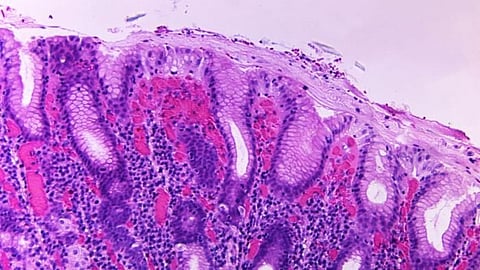The researchers set out to find which proteins are important for the toxin from the anthrax bacterium Bacillus anthracis to enter the cell. To do this, they screened a library of 1500 genes that are normally involved in organizing the cell’s organelles as well as its membrane.
Anthrax infection and ER-Golgi contact sites
The anthrax toxin is made up of three subunits, a Protective Antigen that allows it to bind receptors on the target cell, and two enzymatic subunits, the lethal factor and the edema factor, which are what actually cause damage to the cell.


